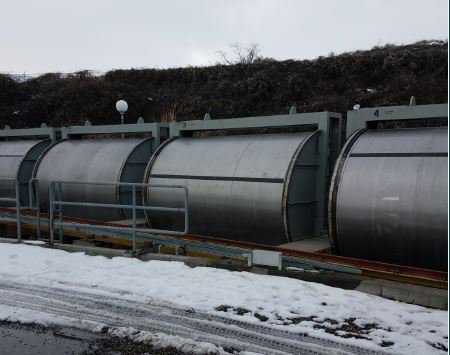Fish and Wildlife Program Cost Savings Help Pay For Fish Screen Repairs
- November 15, 2019
- John Harrison

In the same way you don’t buy a new car and ignore routine maintenance, the Council is not ignoring the routine maintenance of structures and equipment purchased through its Columbia River Basin Fish and Wildlife Program that help raise, release, and protect fish and wildlife in the Columbia River Basin. And just as you might dip into your savings to pay for needed maintenance, the Council is paying for the maintenance of facilities and equipment funded through its program with savings realized from reduced spending on other projects or projects that have been completed and have some money left over.
Hatcheries, fish-diversion screens, and maintenance of lands acquired for wildlife benefits are the primary focus of these savings. This month the Council saw a good example of an effective use of cost savings to repair and reburbish some very large, and very important, fish screens installed in an irrigation canal in Eastern Oregon.
For a cost of $281,316, last winter four 9-by-12-foot rotating drum screens were removed from the Westland Irrigation District canal near Hermiston, transported to the Washington Department of Fish and Wildlife’s screen shop in Yakima, disassembled, sand-blasted, reassembled, painted and reinstalled before the beginning of the 2019 summer irrigation season. The screens were originally installed in 1990, and had not been refurbished. Among other problems, the screens used a type of wire mesh that no longer complies with federal standards.
It was not a pretty job. Submerged parts of the screen assemblies had rusted badly, some so badly they had to be replaced and in some instances reconstructed. Some were so badly corroded it was difficult to distinguish the heavy corrosion from the original part.

It all took three months, but in the end the irrigation district now has essentially brand-new rotating screens that comply with the law.
The Council adopted an asset management strategic plan in 2018 to use project cost savings to repair and maintain infrastructure to ensure that program investments continue to deliver their intended benefits. The savings are being used at hatcheries for maintenance such as repairs to and replacement of pumps, generators, and chillers, and also for repairing, rebuilding, and replacing fish screens.




